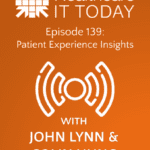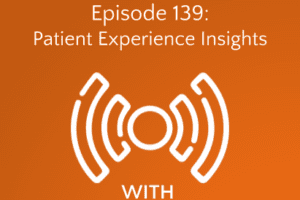This is the final article in a series about social determinants of health (SDoH). Previous articles covered the definition, collection, sharing, and use of SDoH. I’ll finish with a look at some specific areas of intervention.
We’ve seen the importance of personal interventions, through interviews and evaluating SDoH, to solve problems. In rural areas, where it might be daunting either to travel to a doctor or to schedule an online visit with poor Internet access, home visits fill the gap. Conduit Health Partners is one organization that does so. A patient can speak to a nurse immediately—as opposed to calling a PCP, who might take hours or even days to return a call—and determine whether a problem can be solved at home, urgent care, or the emergency room. President Cheryl Dalton-Norman says they’ve found that they prevented a patient from going to the ER about 25% of the time when the patient considered doing so.
One site used SDoH to ensure equity for under-served populations when there wasn’t enough of a critical drug for all patients. (Of course, selecting patients along any sort of criteria is controversial.)
Aid for Employment and Financial Management
One valuable area of intervention, using SDoH, is helping people find work. According to Tina Burbine of Healthlink Advisors, many people emerge from prisons or treatment programs with neither job training or secure housing.
Maria Gil, Data-Tech-AI Partner, Consumer and Healthcare at Genpact, emphasizes the importance of teaching financial literacy. A company survey showed it to be the service most desired by health plan clients. (Unfortunately, even the best financial planning cannot overcome the scourges of poverty.)
SDoH data is a major component of the information captured by Wellframe, a digital health management platform used by health plans. A patient who signs up to be a member of Wellframe provides SDoH information, which the Wellframe platform then shares information with care managers who can contact the members to address the problems.
Jake Sattelmair, who is Wellframe’s co-founder, executive vice president, and general manager, told me that the service asks questions during an unstructured chat on the member’s mobile device. They supplement that interview with surveys and assessments. Sometimes, such as when discussing sensitive issues, Wellframe may use a phone call or even a visit, according to Sandhya Gardner, CMO of HealthEdge Clinical Solutions.
They reach out to members every 2 or 3 days in case new problems crop up. Using an app is particularly useful for people who have to change mobile phones often.
An example of the unusual problems Wellframe can turn up is a truck driver who wasn’t adhering to his prescriptions. It turned out that he was on the road for long periods of time and didn’t have long enough refills, which had been set up in an automated fashion without taking his needs into account.
Sattelmair says that some health plans do a better job than others at training their teams to be alert and handle SDoH. By now, the plans that handle the most difficult and complex patients are good at making SDoH part of their workflows.
Food Aid
Federal government food programs expanded significantly during the COVID-19 crisis. Food aid isn’t limited to pointing a patient to a soup kitchen or food bank. A program called Fresh Connect, from About Fresh, provides an app that connects its users to fresh food sources.
Fresh Connect vets the foods offered and ensures that they are fresh and healthy. It can also take into account the patient’s cultural preferences. Thus, the service is more intelligent than the supplemental nutrition assistance program (SNAP)—but arguably also more intrusive, because it exerts some control over the user’s choices.
Another source of fresh foods for low-income people is FarmboxRx, often available through Medicaid and Medicare Advantage programs as part of SNAP or Healthy Food Card benefits. The health plan makes FarmboxRx available to members based on eligibility factors such as income, location, and the presence of a chronic health condition.
Recently, though, Medicaid has imposed tight restrictions on its food programs, leaving more people food-insecure.
The contents of FarmboxRx boxes can vary to meet the needs of different ethnic cuisines. They buy from local growers when possible.
FarmboxRx reports statistics on which members have used the service back to the health plan. The plans use this information to develop their population health models and improve health equity.
Growing food locally is another option, although one with limited reach.
Obtaining Medication
Technology from TailorMed helps providers and pharmacies connect patients with financial assistance for their medications. Many doctors, TailorMed finds, don’t realize the financial burden they place on some patients with the medications they prescribe. Using data and predictive analytics, TailorMed flags financially at-risk patients based on factors such as prescribed medications and insurance coverage. Clara Lambert, director of financial navigation, points out that out-of-pocket costs keep rising, reaching $8,300 per year now for Medicare Advantage.
TailorMed’s platform then produces a comprehensive list of cost-saving opportunities provided by drug manufacturers, foundations, and others. The platform can also investigate a patient’s insurance benefits, determining out-of-pocket costs and whether the patient has met their annual deductible or out-of-pocket maximum.
Taking On Resistance on Many Levels
This series on social determinants of health was the most comprehensive, multi-faceted report I’ve ever done for Healthcare IT Today, and the effort was fatiguing. The medical field may well be facing the most complex challenge it has ever taken on by acknowledging the need to address SDoH.
On the positive side, the recent interest in SDoH suggests that value-based payment models are becoming more common and are working.
The racial, gender, and economic disparities at the heart of SDoH shake the foundations of the medical industries and the rest of society. Unlike most medical transitions, which just involve getting clinicians to adopt new techniques and practices (a hard enough task in itself). the SDoH transformation calls on clinicians to discard historically entrenched biases.
And these efforts are doing so at a time when powerful forces want to deny the very existence of SDoH issues, trying to censor attempts to research them and disseminate the results of this research. When a challenge turns into a physical threat, meeting patient needs becomes even harder.













